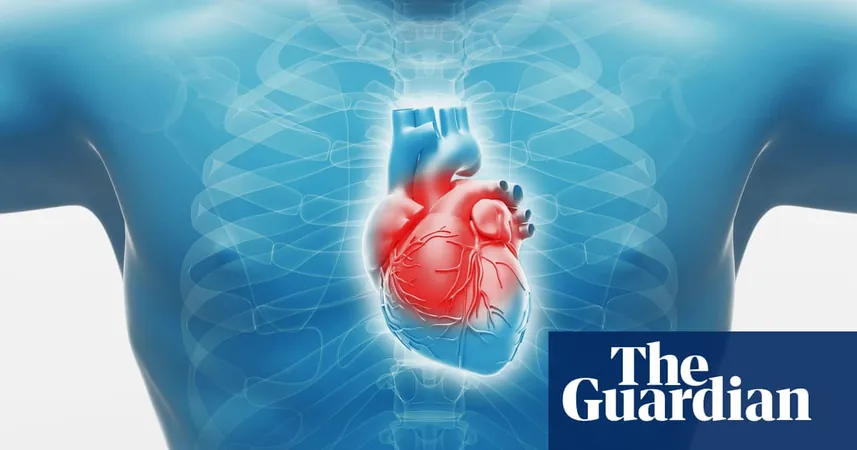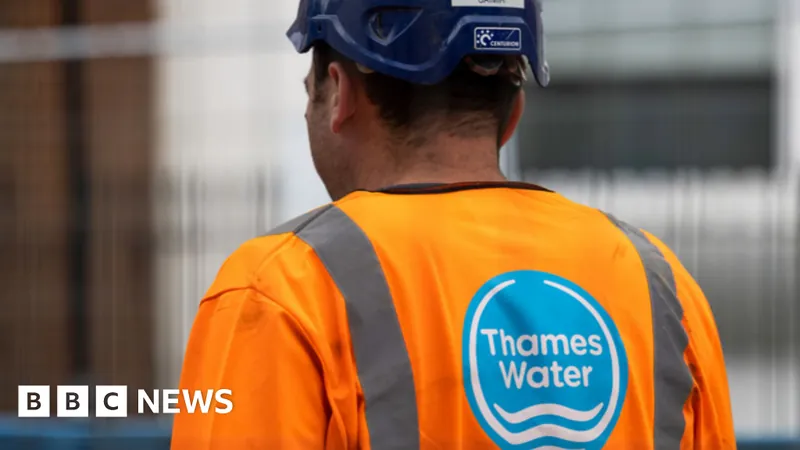
Revolutionary Heart Repair: Scientists Develop Innovative Patches to Revive Damaged Hearts
2025-01-29
Author: Jessica Wong
Revolutionary Heart Repair: Scientists Develop Innovative Patches to Revive Damaged Hearts
In a remarkable breakthrough for cardiac medicine, researchers have developed implantable patches that could potentially restore function to damaged hearts, a significant advancement for the 64 million people worldwide suffering from heart failure. This condition, which can result from heart attacks, high blood pressure, and coronary artery disease, poses a pressing health challenge, especially given the scarcity of transplant organs and the high costs and complications associated with artificial heart pumps.
A team of scientists at University Medical Center Göttingen in Germany is at the forefront of this research, successfully creating patches from lab-grown heart muscle tissue that can help the heart contract effectively. Professor Ingo Kutschka, one of the study’s co-authors, emphasized, "For the first time, we have a biologically engineered transplant that has the potential to stabilize and enhance heart muscle."
These patches are ingeniously crafted from cells extracted from blood, which are then “reprogrammed” to act as stem cells capable of developing into various cell types. The team transforms these cells into heart muscle and connective tissue fibers, embedding them in a collagen gel within a specially designed mold. The final hexagonal patches, typically sized around 5cm by 10cm, can then be attached to the patient’s heart tissue.
Remarkably, the muscle cells in these patches exhibit characteristics similar to a healthy heart aged only four to eight years. Professor Wolfram-Hubertus Zimmermann noted the innovative approach could lead to much safer outcomes compared to directly injecting heart muscle cells, which has been associated with complications like tumor growth and irregular heartbeats.
The initial tests conducted on healthy rhesus macaques yielded promising results, with no signs of irregular heartbeats or serious adverse effects observed even after six months post-implantation. Furthermore, when tested on monkeys with chronic heart failure, the patches demonstrated improved cardiac function and enhanced heart wall contraction.
In a groundbreaking application, the team treated a 46-year-old woman with advanced heart failure using patches made from donor cells. The minimally invasive surgery was successful, and three months later, she underwent a heart transplant, after which researchers found that the patches had remained viable and their own blood supply was established.
While the use of donor cells necessitates immune suppression, the researchers argue that the logistics of creating patient-specific patches would be time-consuming and costly in emergency situations. Importantly, tests have indicated that the beneficial effects of the patches may take three to six months to manifest, which may limit their applicability for all patients. Nonetheless, 15 patients have already benefited from these innovative patches.
Kutschka emphasized the patches should not be viewed as replacements for heart transplants but rather as a novel treatment option for patients currently receiving palliative care, a group that faces a staggering 50% mortality rate within a year.
Experts in the field, including Professor Sian Harding from Imperial College London and Professor Ipsita Roy from the University of Sheffield, have praised this groundbreaking research. While they acknowledged that further work is essential—particularly in terms of patch maturation and vascularization—they expressed optimism about the less invasive nature of this procedure compared to traditional heart transplants.
The team's ongoing clinical trials aim to confirm whether these engineered heart muscle grafts can significantly improve cardiac function in patients. This innovative approach could well be the beacon of hope for many awaiting heart failure solutions. The heart may be in for a revolution—stay tuned as these promising developments unfold!

 Brasil (PT)
Brasil (PT)
 Canada (EN)
Canada (EN)
 Chile (ES)
Chile (ES)
 Česko (CS)
Česko (CS)
 대한민국 (KO)
대한민국 (KO)
 España (ES)
España (ES)
 France (FR)
France (FR)
 Hong Kong (EN)
Hong Kong (EN)
 Italia (IT)
Italia (IT)
 日本 (JA)
日本 (JA)
 Magyarország (HU)
Magyarország (HU)
 Norge (NO)
Norge (NO)
 Polska (PL)
Polska (PL)
 Schweiz (DE)
Schweiz (DE)
 Singapore (EN)
Singapore (EN)
 Sverige (SV)
Sverige (SV)
 Suomi (FI)
Suomi (FI)
 Türkiye (TR)
Türkiye (TR)